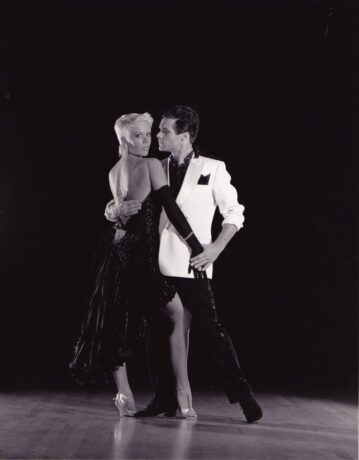by Denise Weavers
The Technique Books include a number of basic figures in each dance. These figures have been carefully selected so that each one represents a particular principle, that every dancer needs to learn and fully understand before further progress can be achieved.

At a simple level, this might be the correct foot positions and footwork. However, the information contained within the Technique has far more than this to offer. For example, it deals with various types of lead/follow and communication with partner.
The action applied to any given movement is particularly important in portraying the character of the individual dances. (There are many figures that are common to two or more dances, but the action with which such figures are danced will convey the character of that particular dance). The Technique Book is extremely helpful here in that there is a dedicated column explaining the precise Action Used for every step.
My advice to any aspiring competitor is to study all the figures contained within the Book. This is not simply to learn the figure, but to fully grasp the underlying information that it is there to represent.
One good example of this would be the Close Hip Twist in Rumba with the Man dancing the Advanced Opening Out Movement. This introduces the concepts of a Delayed Forward Walk with Compressed Knee for the Lady and Delayed Backward Walk for the Man. Study of the various Amounts of Turn (a separate column) for Man and Lady will allow the couple to be harmonious in their relative body positions.
Another example, this time of shaping lead, is La Passe in Paso Doble, which explains how the Man leads his partner and in doing so creates the imagery of a Matador using his cape.
Once all the underlying principles have been understood and mastered, applying these to your own, individual choreography is the challenge that awaits you.
Good Luck!










